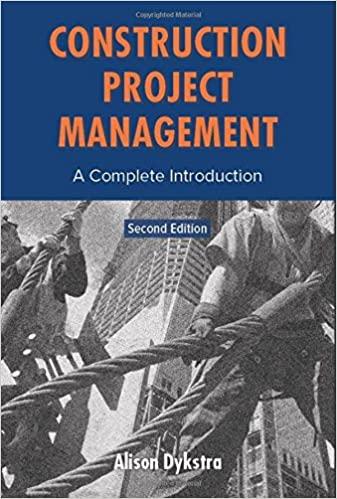Question
Arthur Dooley, a tenant in a large apartment building, had several grievances with the building's manager, Otis Fremont. Dooley designed a one-page flier in which
Arthur Dooley, a tenant in a large apartment building, had several grievances with the building's manager, Otis Fremont. Dooley designed a one-page flier in which he asserted, "Fremont has a long record of criminal convictions as a landlord. Fremont had received three notices of violation from the local housing commission in the past two years for inadequate lighting and locks. The commission had then threatened to seek a court order requiring correction of the violations, but dropped the matter when Fremont made the necessary repairs. Fremont has no criminal record. Dooley made 200 copies of the flier at his print shop for distribution to other tenants in the building. On his way back from the print shop, Dooley met Fremont by chance and, after a lengthy conversation, they settled their differences. The fliers were not mentioned. Although Dooley intended to destroy the fliers when he returned to his apartment, he was struck by a teenager riding a skateboard and the fliers were scattered by the wind. Many of the fliers were read by other persons, and Fremont filed suit for libel. There are three relevant cases. All are from the highest appellate court of the State.
1. What three most important points should you, the plaintiff include in your opening statement? State briefly why they are important to your case.
2. List the three most important witnesses to your case and briefly state why they are important to your case.
3. List the three most important pieces of evidence you will introduce at trial and briefly state why they are important to your case/what each will prove.
4. You have been given statutes/legal cases to work with. What is the strongest statute or legal case (For example: Thomas v. Gibbons or Civil Code Section 1541, etc. )for your side? State the elements and apply them to the facts of your case. (For example: In Thomas v. Gibbons, the law is _________________. The first element is __________ and applies to our case because ___________________, etc.)
5. You have been given statutes/legal cases to work with. What is the weakest statute or legal case (For example: Thomas v. Gibbons or Civil Code Section 1541, etc.) for your side? State the elements and state why they are not helpful to the facts of your case. (For example: In Thomas v. Gibbons, the law is _________________. The first element is __________ and does not apply to our case because ___________________, etc.)
6. What evidence, law, fact, etc. in favor of the other side is the most damaging to your case? Why?
Step by Step Solution
There are 3 Steps involved in it
Step: 1

Get Instant Access to Expert-Tailored Solutions
See step-by-step solutions with expert insights and AI powered tools for academic success
Step: 2

Step: 3

Ace Your Homework with AI
Get the answers you need in no time with our AI-driven, step-by-step assistance
Get Started


